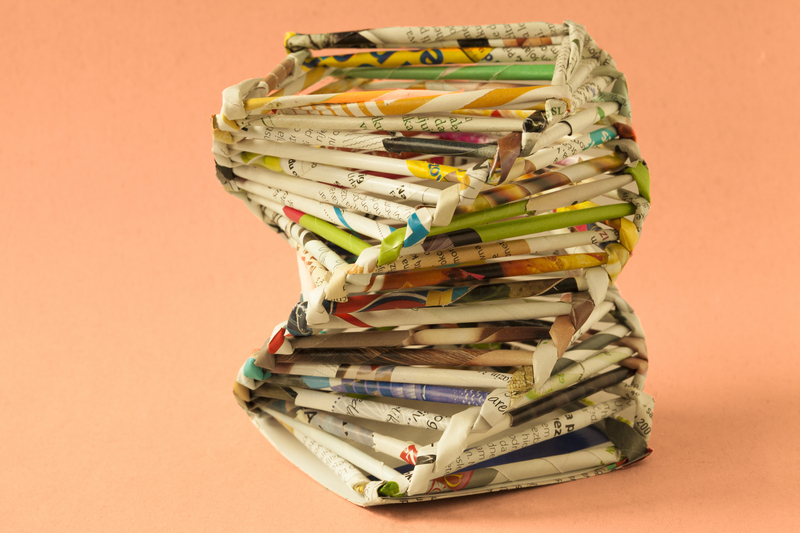Recycling Your Used Cookware Without Harming the Environment
Cookware is an essential part of daily life, but after years of use, pans, pots, and kitchen gadgets can become worn-out or damaged. Throwing your used cookware in the trash may seem like the simplest solution, but it can result in unnecessary landfill waste and environmental harm. Learning how to recycle your used cookware responsibly ensures you reduce your environmental impact, support sustainability, and even sometimes benefit your local community.

Why It Matters: The Environmental Impact of Discarding Cookware
Most traditional cookware is made from metals like aluminum, stainless steel, or cast iron, and often includes plastics, glass, ceramics, or non-stick coatings. These materials don't degrade quickly in the landfill, and some--like Teflon coatings--can leach toxins as they deteriorate. Properly recycling your old cookware keeps these items out of landfills, conserves valuable resources, and reduces pollution.
- Metals: Metal cookware is highly recyclable, yet millions of tons end up in landfill each year.
- Non-stick coatings: If not processed properly, these might introduce harmful chemicals into soil and water.
- Plastic handles and lids: Not always recyclable through curbside bins, requiring special attention.
Assessing Your Cookware: When Is It Time to Recycle?
- Pans with warped, cracked, or broken handles
- Pots with deep scratches or flaking non-stick coatings
- Items that no longer sit flat or evenly distribute heat
- Cookware that is unsafe for food preparation
If the cookware cannot be repaired or safely used, finding a sustainable disposal solution is the responsible next step.
Top Methods for Eco-Friendly Disposal and Recycling of Old Cookware
There is no single solution for responsibly recycling used cookware. Depending on the material and condition, here are the best ways to keep cookware out of landfills:
1. Metal Scrap Yards
Most metal cookware--such as stainless steel, copper, cast iron, and aluminum--can be taken to a local scrap yard or metal recycling center. These facilities extract and reuse valuable metals, offering both environmental and economic benefits.
- Remove any non-metal parts (plastic handles, lids, non-stick coatings if possible).
- Check with the scrap yard about accepted materials and any preparation they require.
- Some centers may even pay for scrap metal by the pound.
2. Municipal Recycling Programs
Some local recycling programs accept cookware, especially those made of recyclable metals. Not all municipalities allow drop-off of bulky items or certain types of coated pans, so it's essential to check your city's official recycling guide.
- Call your local recycling facility or visit their website for guidance.
- Prepare cookware as directed--some facilities may need handles removed or lids separated.
- Use community "bulky item" collection days when available.
3. Giving Cookware a Second Life: Donations and Reuse
Not every old piece of cookware belongs in the recycling stream. If the item is still functional (even if it's a little scratched or stained), consider donating it instead:
- Local shelters and food banks
- Community kitchens, soup kitchens, or churches
- Charity thrift shops (like Goodwill or Salvation Army)
- Online swap groups or freecycle websites
Donating supports those in need and extends the life cycle of your cookware--delaying its entry into the recycling or waste stream.
4. Upcycling and Repurposing Creative Projects
If your cookware isn't suitable for recycling or donation, consider innovative ways to upcycle these items:
- Turn pots or pans into planters for herbs and flowers
- Transform lids into wall art or decorative clocks
- Create bird feeders or garden tools
- Use handles as hooks in the garage or shed
This approach keeps materials out of landfill and adds unique character to your home or garden.
5. Specialized Retail Take-Back Programs
Some major retailers and cookware brands offer take-back programs for their products. When buying a new pot or pan, inquire if the store accepts your old cookware for recycling. Examples include:
- Le Creuset and other premium cookware brands occasionally run recycling drives
- Retailers like Williams Sonoma may offer disposal with purchase of new gear
These programs often ensure your cookware is processed properly and does not harm the environment.
How to Tell If Your Cookware is Recyclable
Cookware can be made of a variety of materials, and not all of them are recyclable through household bins. Here's a breakdown:
- Aluminum: Highly recyclable, especially if it's pure aluminum (remove plastic, rubber, or wooden parts).
- Stainless Steel: Most metal recyclers accept it; some ask you to separate other materials first.
- Cast Iron: Fully recyclable; highly valued by scrap yards.
- Ceramic & Glass: Not commonly accepted in curbside bins; check with local recycling centers.
- Non-stick (Teflon) Coated: Some facilities cannot accept these; always check.
Caution: If the cookware is coated with non-stick material, especially older (pre-2013) PFOA-based Teflon, recycling centers may have restrictions due to hazardous chemicals. Always confim your cookware's eligibility before dropping off.
Ceramic, Glass, and Non-Stick Cookware: Special Considerations
Ceramic and Glass
Ceramic- and glass-based cookware cannot usually go into traditional mixed recycling. However, you have options:
- Specialty recycling centers: Some regions offer glass and ceramic recycling--call ahead to check.
- Reuse or donation: If not cracked or damaged, ceramics and glassware can be donated.
- Upcycling projects: Turn attractive pieces into serving trays, garden markers, or artwork.
Non-Stick Cookware
Non-stick surfaces pose challenges for recyclers because coatings can be toxic when incinerated or melted. Here's what you can do:
- Contact cookware manufacturers for return/recycling programs
- Some scrap yards accept them if the coating is severely worn away or they have ability to remove/handle non-stick material
- Consider creative reuse for old non-stick cookware in non-food applications (like organizing tools or garden supplies)
Preparing Cookware for Recycling: Essential Steps
To make sure your used cookware recycling is successful and eco-friendly:
- Clean all food residue and oils from surfaces
- Disassemble where possible--remove screws, handles, knobs, or attached plastics
- Check a magnet to identify composition: Magnetic = steel or cast iron; non-magnetic = aluminum or copper
- Sort by type, and follow facility rules for separation
- Clearly label with material if instructed by your local recycling provider
The "Do Not" List: What Not to Do When Getting Rid of Old Cookware
- Don't put pots and pans in your everyday recycling bin without confirming acceptance--they can damage sorting machines
- Don't mix glass or ceramic cookware with glass bottles/jars recycling
- Don't dispose of non-stick cookware in regular landfill dumpsters if possible
- Don't abandon cookware by the curb or in public spaces; it could become hazardous
Alternative Ideas: Extending the Life of Your Cookware
Before you recycle, consider whether your cookware can be fixed or repurposed:
- Re-season cast iron: Even rusty or sticky pans can often be restored
- Replace handles or knobs: Hardware stores sell replacement parts for many models
- Use for camping or crafts: Older pans are perfect for non-kitchen projects
Choosing Sustainable Cookware for the Future
Reducing future waste starts with making sustainable choices when shopping for new cookware. Here's how you can make better purchasing decisions with the environment in mind:
- Purchase high-quality, long-lasting cookware that won't need frequent replacement
- Opt for recyclable materials like stainless steel, cast iron, and pure aluminum
- Choose products from manufacturers with clear recycling programs and eco-conscious policies
- Avoid cheap, disposable, or heavily coated products unless you know they're recyclable
- Read reviews and choose brands known for durability and easy repairability
By being conscious at the point of purchase, you'll find it easier to responsibly recycle or repurpose your cookware when its useful life ends.

Summary: How to Recycle Your Used Cookware Responsibly
- Assess if your cookware can be donated, repaired, or upcycled before pursuing recycling or disposal
- Separate recyclable metals and drop them off at scrap yards or municipal recycling centers
- Contact local authorities or retailers about specific recycling programs, especially for non-stick and ceramic cookware
- Always clean and prepare cookware following facility guidelines
- Never dispose of cookware carelessly; prioritize reuse or recycling
Final Thoughts on Recycling Cookware Without Harming the Environment
Responsible recycling isn't just about tossing old items in the right bin--it's about considering the full life cycle of your cookware and making informed choices at every stage. Recycling your used cookware safely and thoughtfully reduces waste, saves valuable resources, and prevents pollution. Whenever possible, choose to repair, donate, or repurpose your cookware--and when recycling is necessary, follow local guidelines to protect the environment for generations to come.
By following these tips and strategies, you'll ensure that recycling your old cookware is truly eco-friendly--giving your pans, pots, and gadgets a new life without harming the planet.